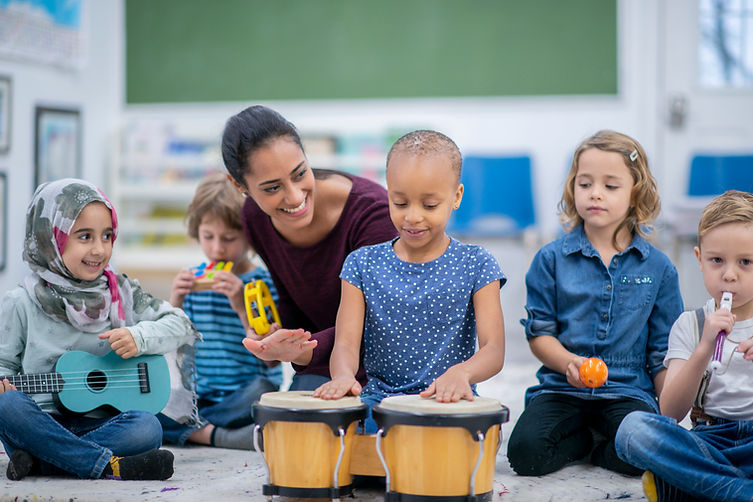
Music Play
Program
Music Play is a program designed to provide a "music and movement" experience for young children. In small groups, children will learn to recognize musical phrases and develop body coordination through a variety of songs, chants, and movement activities. This engaging program ensures that children are both physically and musically involved in creative and enjoyable experiences, fostering a lifelong love for music.

GOALS OF MUSIC PLAY
Our program centers on audiation, which means "thinking in music" or comprehending music with understanding, much like thought is to language. It's about giving meaning to musical sounds in their mind. This focus is crucial because a child's potential to learn music, known as music aptitude, is highest at birth and develops until around age nine, significantly influenced by the quality of their musical environment. A rich musical environment in these early years helps maintain this aptitude, laying the foundation for independent musicianship. Just as children learn to listen and speak a language before they read or write it, we approach music learning in a similar "sound-before-sight" way, preparing them for formal instruction.
WEEKLY LESSONS
Music Play is a weekly program. We meet on the same day and time each week, and each session lasts 45 minutes.
In our fun and engaging classes, children will develop their musical understanding through:
Body Movement: Children will develop rhythm audiation through purposeful body movement
Beat Exploration: They will move in flowing ways, and learn to feel and move to the "big beat" and the "little beats".
Rhythm Patterns: Through games such as the "Watch Please" game, students coordinate body movement with chanting rhythm patterns, helping them internalize tempo and meter
Singing: Singing is a fundamental way to develop tonal audiation
Tonal Context: Children will sing songs, often without words, to focus on the pure sound of various tonalities (such as major and minor)
Resting Tone & Patterns: Games will help them identify and sing the "resting tone" of songs (like "Do" or "La") and echo tonal patterns.
Musical Vocabulary: These activities contribute to building a "musical vocabulary" of tonal and rhythm patterns that form the foundation for audiation.






